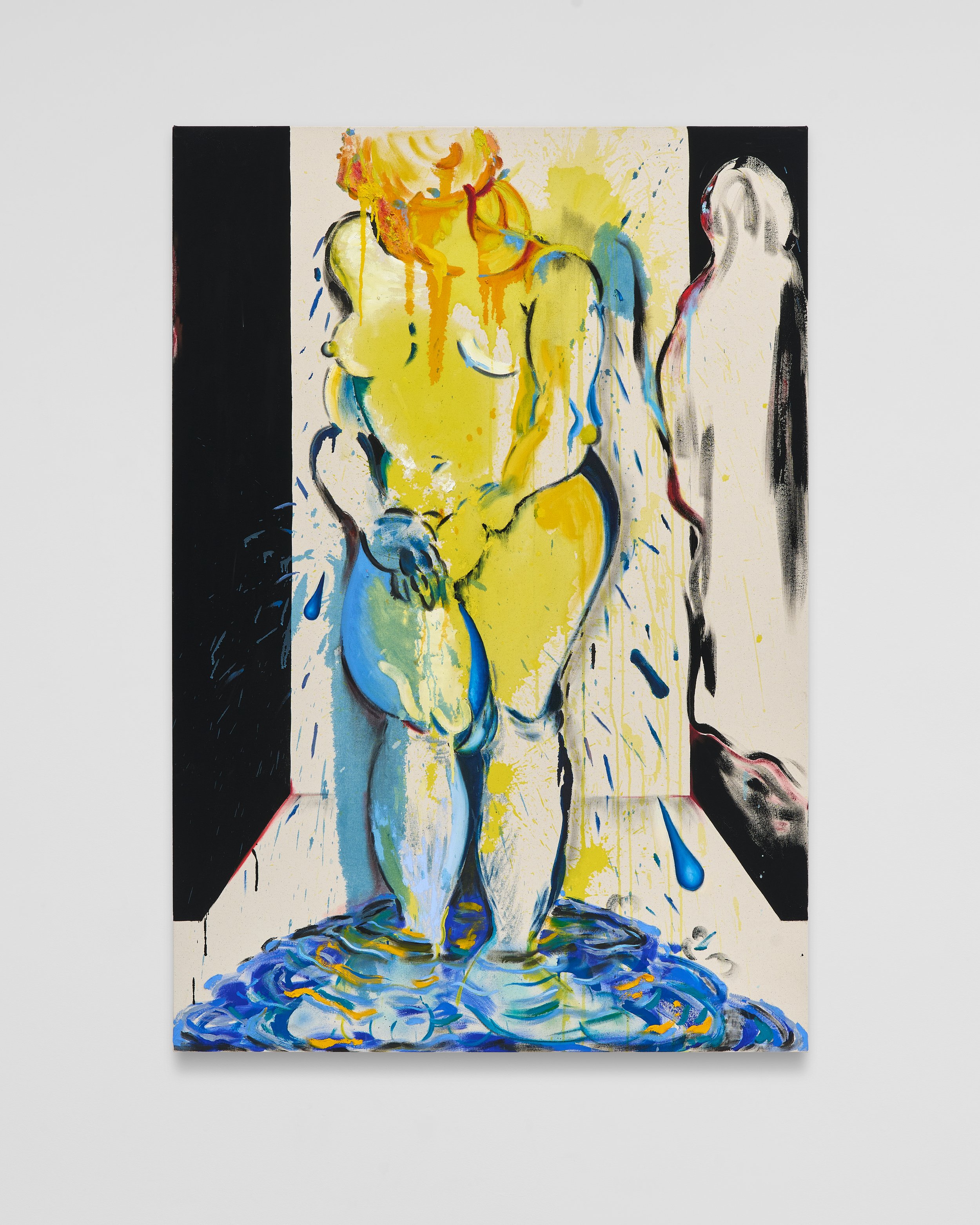Pui Tiffany Chow
Susanna
August 24- September 21, 2024
For her solo exhibition at Phase Gallery, Pui Tiffany Chow draws upon her longstanding interest in the art historical canon to revisit the Old Testament story Susanna and the Elders—a story of female subjugation and persecution—to confront the implicit violence that resides in desire. As the story goes, Susanna—the beautiful and, importantly, faithful wife of Joachim—bathes herself in the privacy of her garden, where she is spied upon by two old men. They threaten to blackmail her with the crime of adultery unless she has sex with them and, when she refuses, accuse her anyway.
A parable of female virtue, the story illustrates how women are equated with their sexual desirability and purity which must be eternally questioned and validated—through the eyes of others. It is this last part that makes the parable of Susanna so infuriating: womanhood, it makes clear, seems to be the purview of everyone except for the woman herself. As art critic John Berger observes in Ways of Seeing, representations of the female subject throughout art history epitomize how depictions of gender are inherently bound to the male gaze, writing, “She is not naked as she is. She is naked as the spectator sees her.”
In Pui Tiffany Chow's work, the subject of bathing Susanna is reframed, inviting the viewer to reenact the role of the voyeur and glimpse her body anew, beyond the violence of implied purity. Consisting of six paintings of varying dimensions all centered on the nude Susanna, Pui uses familiar painting styles and allegorical tropes to reveal the woman’s body as it has been figured and disfigured throughout art history—contorted with outrage, fear, shame, arousal, and disgust—by painters as varied as Gentileschi, Renoir, and de Kooning. Through this series of works, Pui explores the trope of a woman as body, to lay bare how the gaze implicit in painting renders her naked. Stripped of any distinguishing characteristics or context, the figure is reduced to cartoon-like extremes. Extremely wet and dripping with tears of terror or arousal (or both), as evidenced in Susanna #1. Or running away in extreme fright on a cartoonishly bright yellow foot, in Susanna #3, the paintings seem in a state of dissolution.
By employing these contradictory stylistic details, the ugliness of the subject becomes impossible to ignore, and perversely, we as an audience are taken in, taking pleasure in the crime. These same fractured details, however, deliberately interrupt the formal resolution of the paintings, denying the very pleasure that they traffic in. This collapse in formal composition, mark-making, and aesthetics reflects the conflict between the repulsion of the content and the seduction of the imagery.
The artist’s use of absolute black, in particular, reads as a kind of refusal. Matte to near absorption, the black in these paintings voids the perception of pictorial space and reframes the image, blurring the edges of the canvas and its subject. In presenting such a stark staging, Pui reframes the conflict and forces the viewer to confront the psychological darkness underlying the parable. Susanna #2 doubly embodies this sense of denial, as neither presence nor absence. Her body, more abstracted than the others, lifts the black veil as if to cover herself while turning her back towards the viewer; in Berger’s words, “the surveyor of woman in herself is male: the surveyed female.”
What Pui’s paintings ask us to locate is Susanna herself. The exhibition forces the viewer to ask not only where is she, but who is she, and who is she for? Each one of Pui’s paintings is a question, circling around the politics of pleasure. What is pleasure, and who is it for?
__________________________
Pui Tiffany Chow (b. Hong Kong) immigrated to the US after the Handover of Hong Kong from the British government and now lives and works in Los Angeles.
Through pointed art historical references, Pui’s paintings and drawings examine the female form and the capacity for the canvas to stage them. Her work explores the intersection between abstraction and figuration, interrogates painting traditions in both subject and form, referencing Eastern and Western cultural codes and modes that coalesce into a pastiche of different tempos, feelings and approaches.
Her recent solo and two-person exhibitions include Hurly-Burly at Parker Gallery, Los Angeles (2022), 2 Bad Mouse, After Hours Gallery, Los Angeles (2022), Bend, Phase Gallery, Los Angeles (2022). Pui has participated in group exhibitions nationally and internationally at Mey Gallery, Los Angeles (2024), Diane Rosenstein Gallery, Los Angeles (2024), Pomona College Chan Gallery, Claremont (2024, 2022), The Wolford House, Los Angeles (2023), Shrine Gallery, Los Angeles (2023), Torrance Art Museum, CA (2023), Galerie Anne Barrault, Paris (2022), Phase Gallery (LA), Gravy Gallery, Santa Cruz (2022), One Trick Pony, Los Angeles (2021), Kylin Gallery, Los Angeles (2021), ArtCenter DTLA, Los Angeles (2020), UCLA New Wight Gallery, Los Angeles (2019), Culver Center of the Arts, Riverside, CA (2019) and Riverside Art Museum, Riverside, CA (2018).
IG: 7iffy

